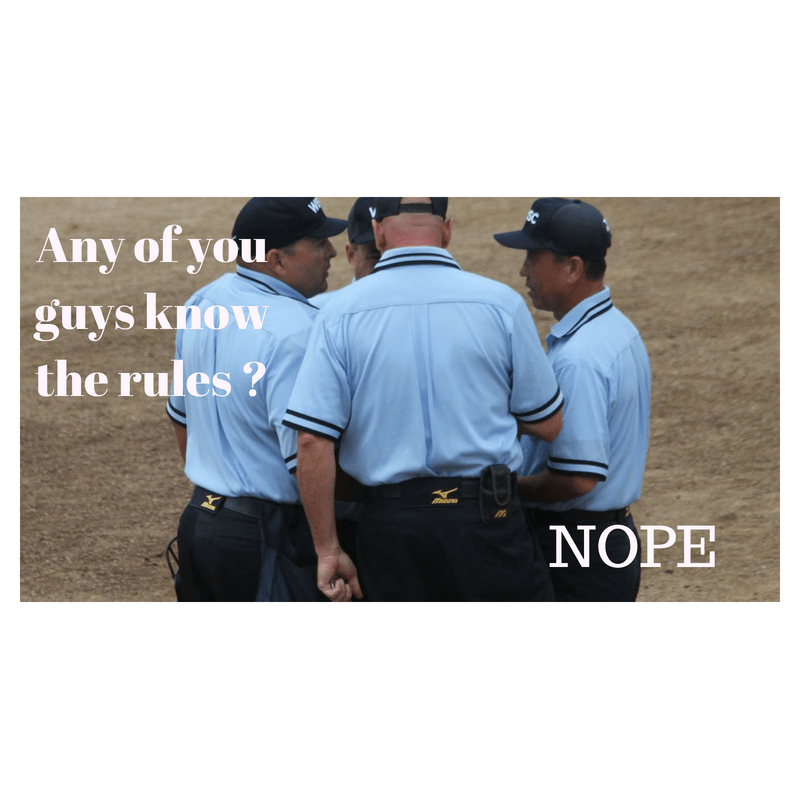he Infield Fly Rule Explained
The rule is applicable with a runner at first and second, or first, second and third bases with less than two outs. During a youth baseball game, many of us as parents and coaches have heard “Infield Fly” called out and/or talked about. But many do not know exactly what the infield fly rule is and even fewer can explain it. What exactly is the infield fly rule in youth baseball? It’s the exact same as in MLB. However, the “In-field Fly” rule can be confusing, especially for youth baseball and youth baseball coaches and parents.
 Being aware of youth baseball rules can greatly help you coaching youth baseball.
Being aware of youth baseball rules can greatly help you coaching youth baseball.
Lets take a moment to discuss and explain the infield fly rule.
The rule is often a point of controversy among coaches, players and spectators watching the game, often times umpires. Many ask, “what is the ‘In-field” fly rule? When does the “In-field Fly” baseball rule apply? Here we explain the reason for this rule of baseball, the situations under which this baseball rule applies, and some more info to help coaches and parents of youth baseball better understand the infield fly rule.
Why do we have the “In-field” fly rule?
According to MLB rules, the stated purpose of the infield fly rule, is to prevent a defensive player from dropping a fly ball on purpose or letting an infield fly drop to the ground untouched with the intention of trying to turn a double play.
Example of the infield fly rule, there are runners at first and second base with no outs. The third short stop is fielding a high pop fly hit high between him and second base. If we did not have the “In-Field-Fly” rule, he could let it drop. Pick it up and quickly touch second base, then throw to third to get a tag on the second base runner for the double play. The defense has turned an easy double play. The two runners being forced to tag up on the play have no chance of advancing to the next base in time to prevent the outs.
Another scenario would be bases loaded, an infield fly is hit high that will land four feet in front of home plate. The catcher sets up to make the catch. He allows the ball to hit. He quickly picks it up, touches home plate for the first out and then he throws the ball to the third baseman who is set up on the bag. The third base man catches the ball, tags the base for the second out, and then throws to second base for the completed triple play.
What if there was not an “In-field” fly rule ?
If there was no infield fly rule, the following could happen: runners on first and second with less than 2 outs. Pop fly is hit to the third baseman. He intentionally drops the fly ball, picks it up, tags third. Then makes the throw to second base to complete a double play. It is an easy triple play because all three runners are tagging up on their bases in anticipation that the ball to be caught.
What situations does the infield fly rule apply?
Some Important Things to Remember about the Infield Fly Rule:
- The rule is applied on any fair fly ball that could have been caught by an infielder with ordinary effort. The ball does not have to be caught. The batter is declared out immediately when the ball is hit. The out stands if the ball is in fair territory.
- The ball does not have to be in the infield. It can be in the outfield if an infielder, should be able to catch the fly ball with ordinary effort. This is according to the judgment of the umpire.
- If the rule is invoked by the umpires and an outfielder catches the ball, the out still stands. If the ball land uncaught in fair territory, the out still stands.
- Once the rule has been called by the umpire. The other base runners may advance at their own risk. If they attempt to advance and are tagged out, the result is a second out on the play. The runners can advance after tagging up like they would on a fly ball. The difference for the runner is that since the batter is out, there is no longer a force play. The runner does not need to advance, even if the ball is not caught.
- An infield fly rule is called when the ball is in the air. The signal given by the umpires is a finger pointing into the air.
- The fly ball must be in fair territory. The umpires will make a verbal call, “Batter is out if the ball is fair”.
These six things to remember will make you an expert coach or parent in interpreting the infield fly rule for youth baseball

